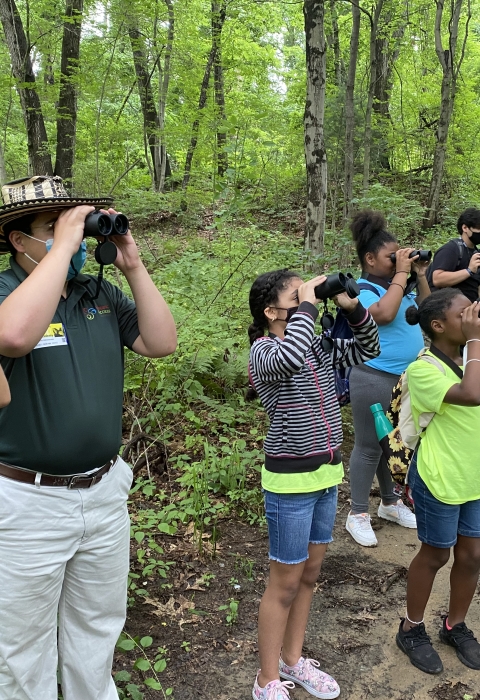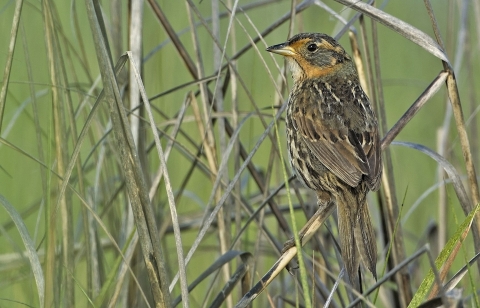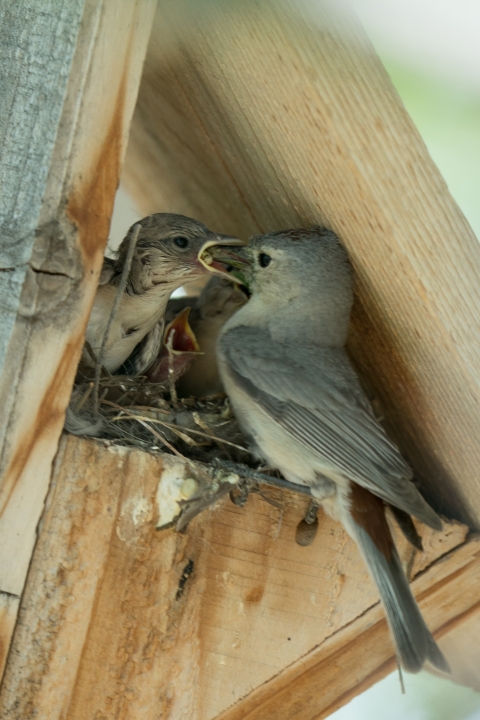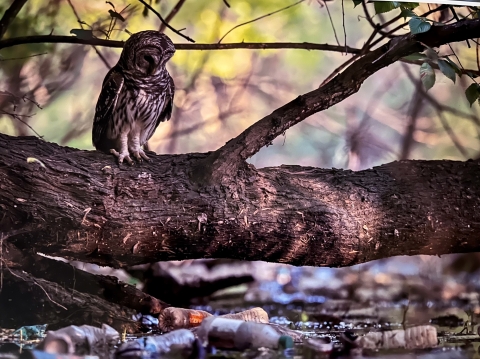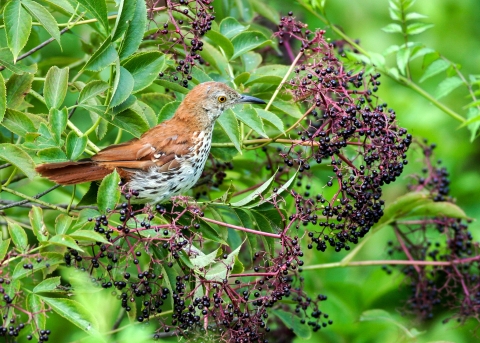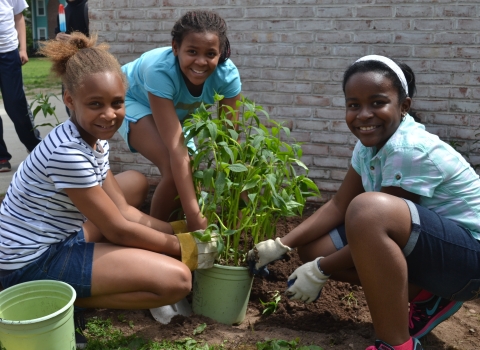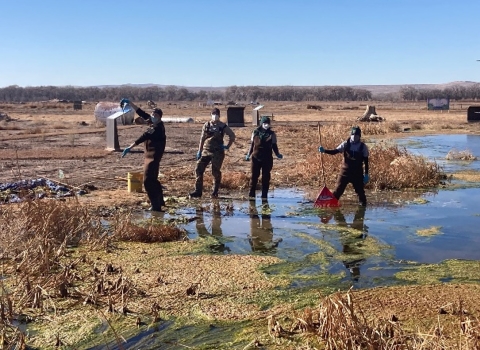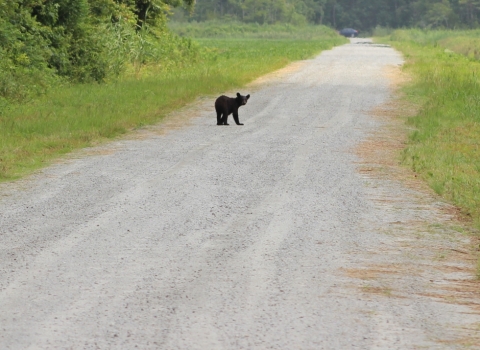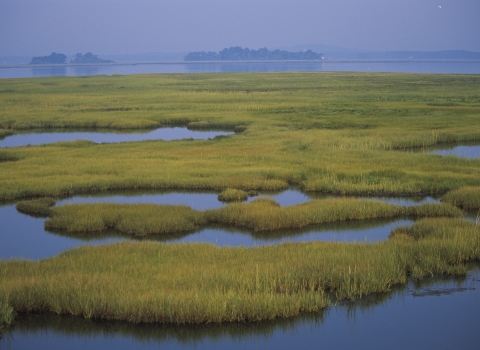This year the Service’s Urban Bird Treaty Program is funding seven community-based conservation projects through its participation in the National Fish and Wildlife Foundation’s Five Star and Urban Waters Restoration Grant Program.
Every year, the NFWF Five Star program seeks to develop community stewardship of local natural resources in cities across the country to preserve these resources for future generations and enhance habitat for local wildlife by providing measurable and meaningful conservation and educational outcomes.
Partners in these NFWF-Urban Bird Treaty Program projects are creating opportunities for people in diverse and underserved communities to engage in a wide range of activities-–to help make their urban areas healthier places for birds and people.
For the 2023 grant funding cycle, the Service’s Migratory Bird Program contributed funds supporting projects in Texas, Oregon, Michigan, Georgia, Massachusetts, Utah, and Arizona. Below are summaries of these seven projects:
Mystic River Watershed Association, Inc. in Arlington, MA: This project will support and expand monitoring of the saltmarsh sparrow in Belle Isle Marsh, the last remaining salt marsh salt marsh
Salt marshes are found in tidal areas near the coast, where freshwater mixes with saltwater.
Learn more about salt marsh in Boston Harbor, contributing to vital efforts to preserve this endangered species in the face of extinction caused by sea level rise. In addition, this project will support vital invasive species invasive species
An invasive species is any plant or animal that has spread or been introduced into a new area where they are, or could, cause harm to the environment, economy, or human, animal, or plant health. Their unwelcome presence can destroy ecosystems and cost millions of dollars.
Learn more about invasive species management efforts, volunteer events to build stewardship of salt marsh habitat, and educational programs that build awareness of habitat, salt marsh ecology, and climate change climate change
Climate change includes both global warming driven by human-induced emissions of greenhouse gases and the resulting large-scale shifts in weather patterns. Though there have been previous periods of climatic change, since the mid-20th century humans have had an unprecedented impact on Earth's climate system and caused change on a global scale.
Learn more about climate change . They will work with under-resourced communities in East Boston and Revere, both of which are adjacent to the marsh.
Cascade Pacific Resource Conservation and Development in Portland, OR: Aves Compartidas program and Ecology in Classrooms and Outdoors will bring nature and wetland education, as well as habitat restoration, to low-income students in Portland, Oregon. This program will serve 255 3rd-5th grade Spanish-immersion students and nine teachers at Lent and Alder Elementary Schools in Outer East Portland. Students will learn and work in their classrooms and school grounds to determine how watershed health, habitat restoration, climate change, and bird migration are intertwined. They will participate in hands-on bird games and habitat activities, as well as stewardship restoration projects on school grounds to better connect ecological concepts to the issues happening in their communities.
Tucson Audubon Society in Tucson, AZ: Project partners will provide community and youth engagement opportunities along the rejuvenated Santa Cruz River to create safe passage and habitat for birds. To create more suitable nesting habitat, Tucson Audubon Society will build and distribute 100 Lucy’s Warbler nestboxes and install window decals to prevent bird collisions at homes and businesses within the service area. Students will build and install at home and school an additional 100 nestboxes as part of classroom lessons. Partners will collaborate with local schools and other organizations to help deepen the community’s connection to birds and other riparian riparian
Definition of riparian habitat or riparian areas.
Learn more about riparian wildlife through outreach at neighborhood meetings and other local events, and by co-hosting trash pick-ups and birding field trips along the Santa Cruz River.
Detroit Audubon Society in Detroit, MI: Detroit Audubon will work to accomplish Detroit Bird City goals collaborating with numerous partners, including the City of Detroit Parks and Recreation Department, the U.S. Fish and Wildlife Service, Detroit Zoological Society, Greening of Detroit, and many neighborhood organizations. Partners will engage with local communities and restore a total of 23.6 acres of native meadows, install signs, benches, and pathways, provide educational programs and conservation events, and improve community access to green space. These native meadows provide important ecological functions such as pollination, bird habitat, stormwater capture, carbon sequestration, and air and water pollution mitigation.
American Bird Conservancy in Houston, TX: Project partners will reduce plastic pollution in the Galveston Bay watershed by organizing cleanup events at Houston parks, state parks, and national wildlife refuges. To expand the program, partners, including USFWS, ABC, and Texas Parks and Wildlife Department will hire a Conservation Fellow to include wildlife-themed lessons into outreach and education efforts in diverse and underserved communities. These activities will increase community awareness of marine debris and its impacts on wildlife and engage local students and residents in Houston-Galveston in cleanup and BioBlitz events to improve habitat and reduce the threats of plastics entanglement for beach nesting birds, endangered sea turtle species, and other wildlife along coastal and bayou shorelines in the Galveston Bay watershed.
Georgia Audubon in Atlanta, GA: Project partners will restore 10 acres of imperiled Piedmont habitat to protect the South River Watershed for the benefit of birds, pollinators, and other wildlife. They will engage seven other local partners and at least 50 volunteers to install 5,400 bird-friendly native plants and 40 pounds of seed and remove 10 acres of non-native invasive vegetation, as well as engage at least 460 community members, including at least 300 students, in conservation experiences, including many from diverse and underserved communities.
In addition, the Service’s Urban Bird Treaty Program and National Wildlife Refuge System co-funded a project at the Ogden Nature Center in Ogden, UT. This diverse partnership will provide the local community with hands-on experiences to improve water quality, create wildlife habitat, engage in community science, and learn about the importance of local watershed health to birds, other wildlife, and people in the Weber River Watershed. Ogden Nature Center will work with a diversity of local organizations to engage K-12 students and other community members in projects to improve rivers and trails in the watershed. Participants will remove trash and invasive species and restore a wetland and riparian corridor at the Ogden Nature Center and take part in avian monitoring to improve conservation efforts for birds.
